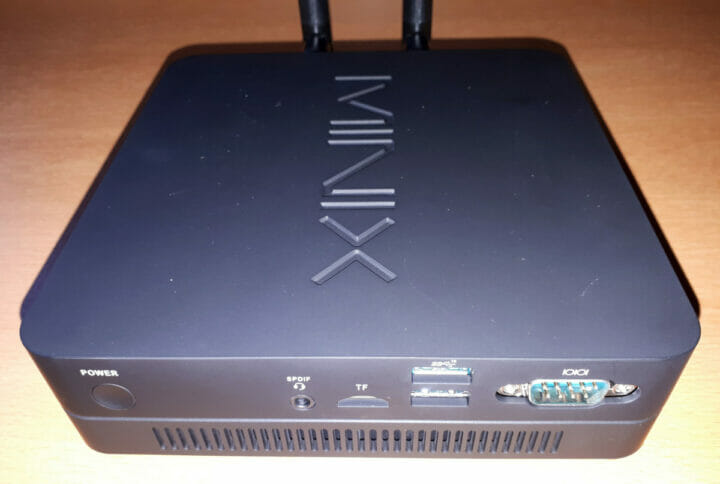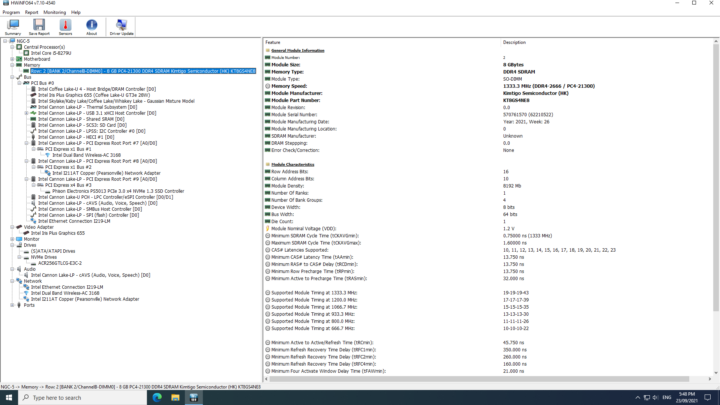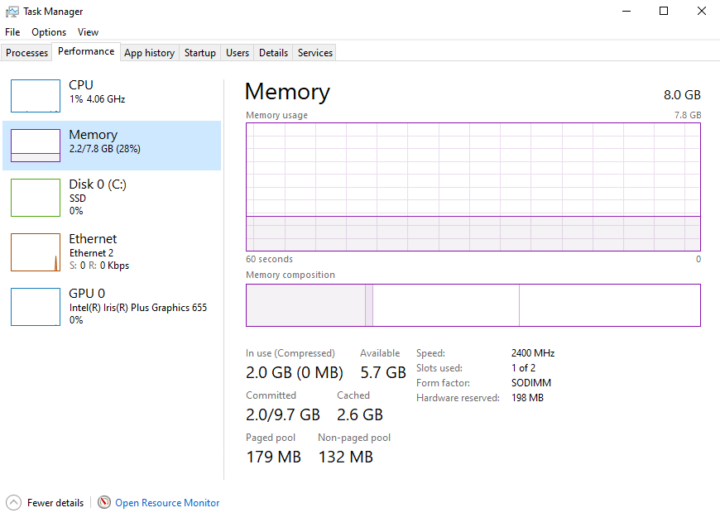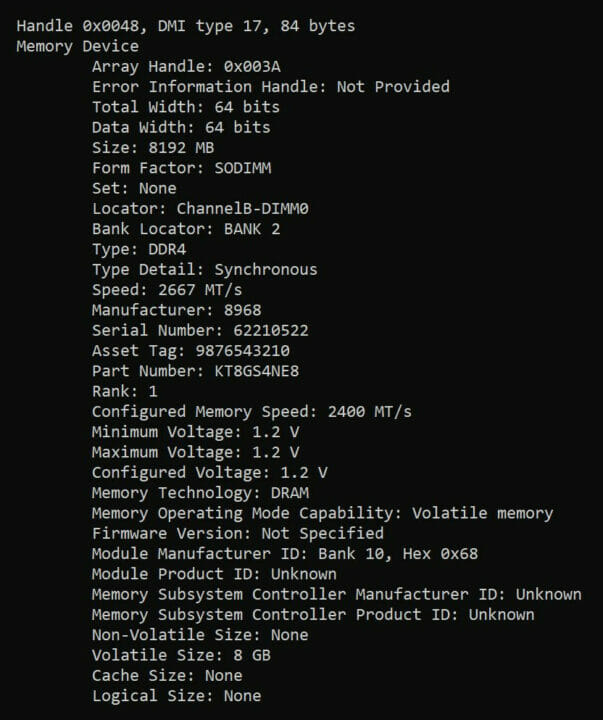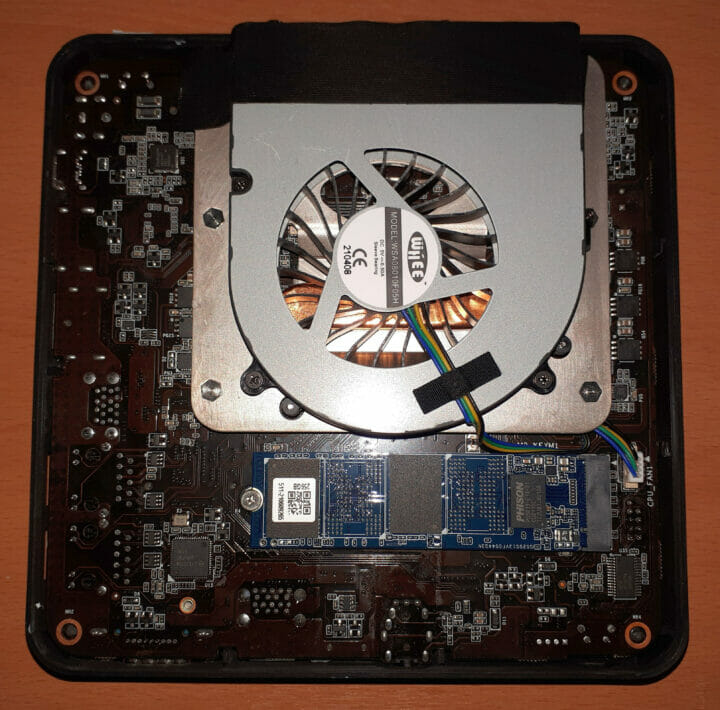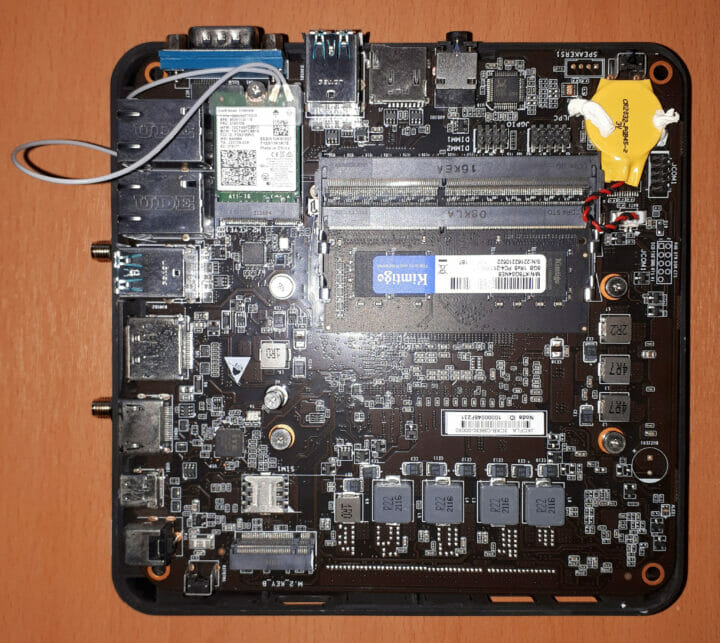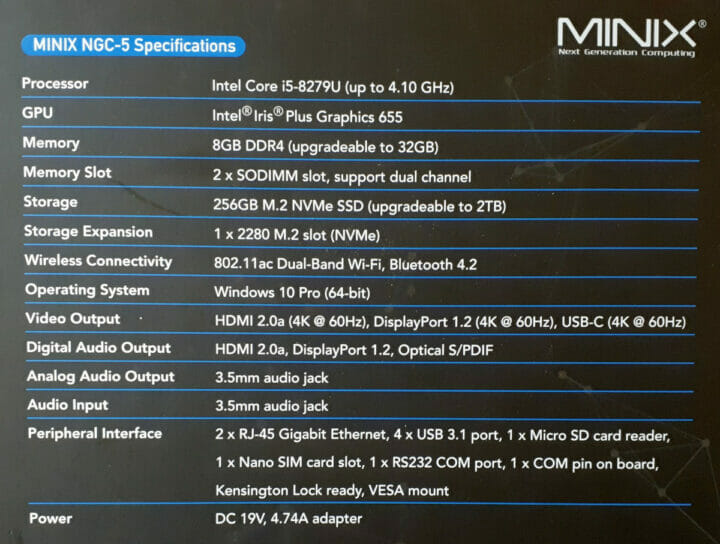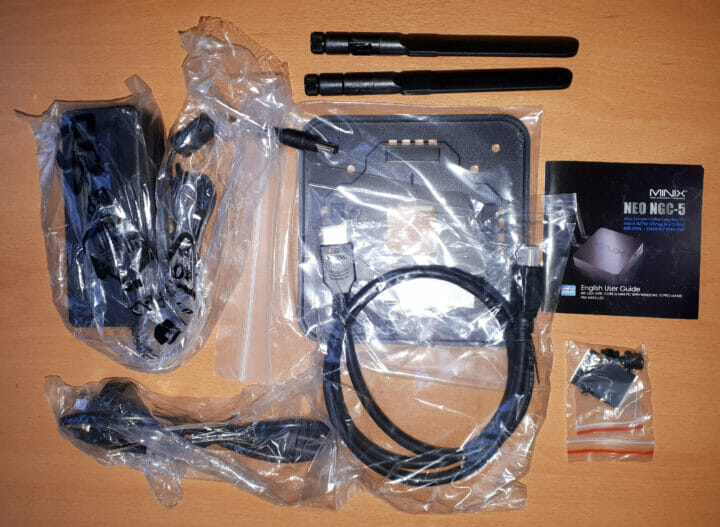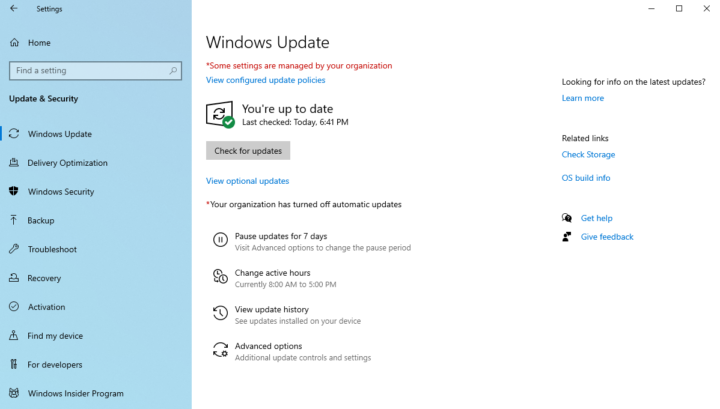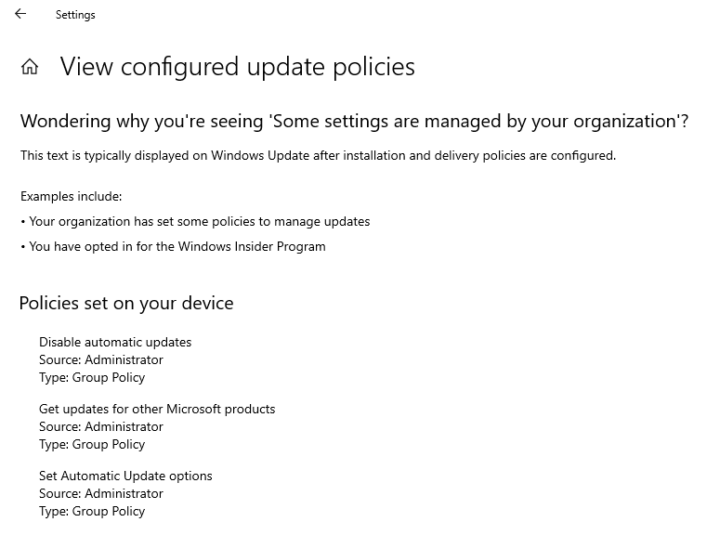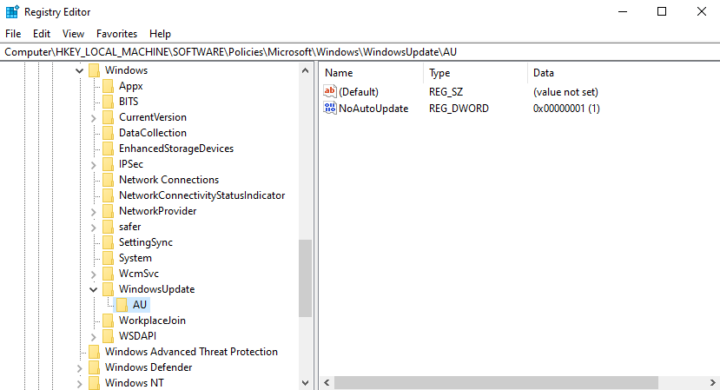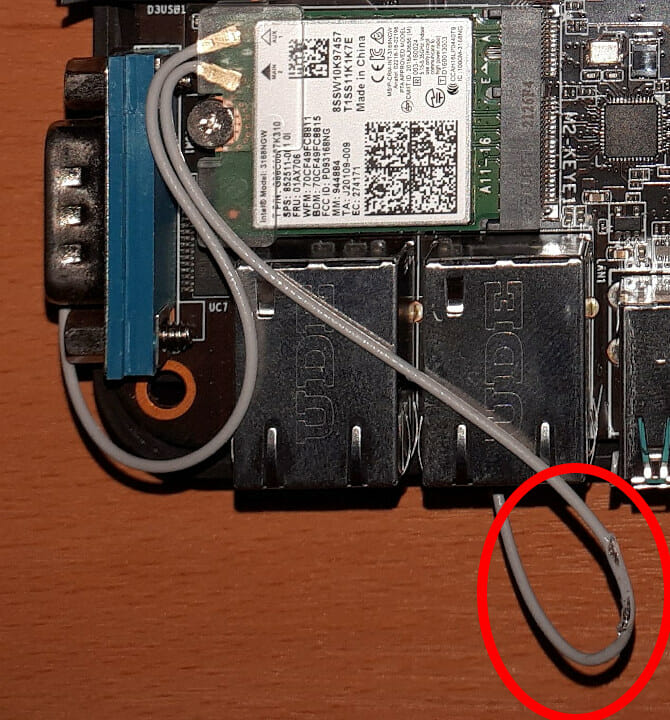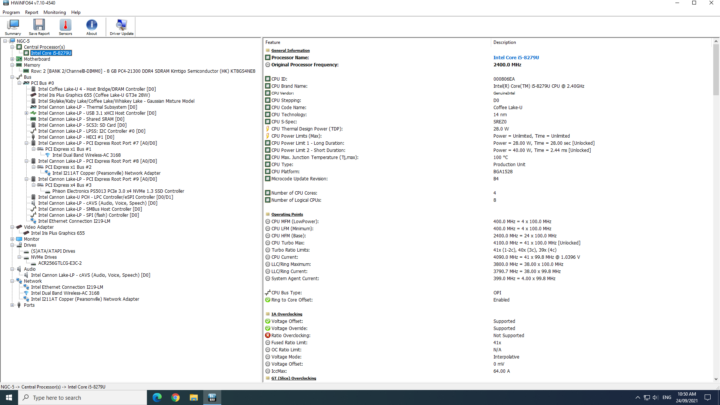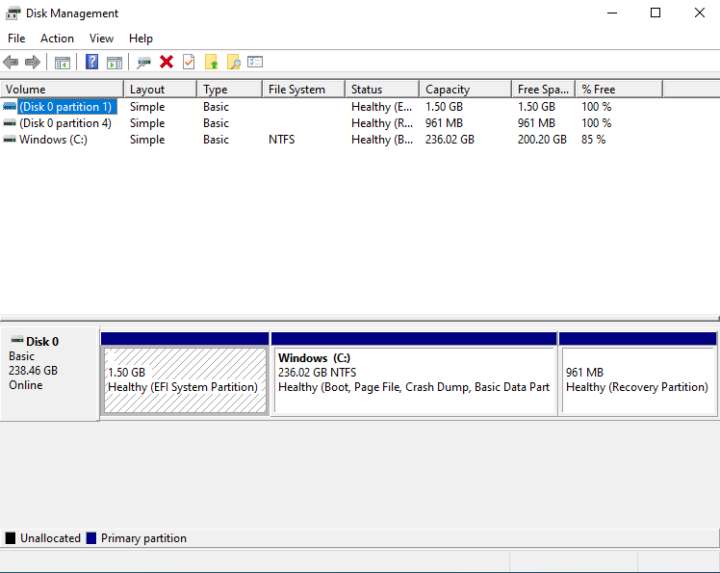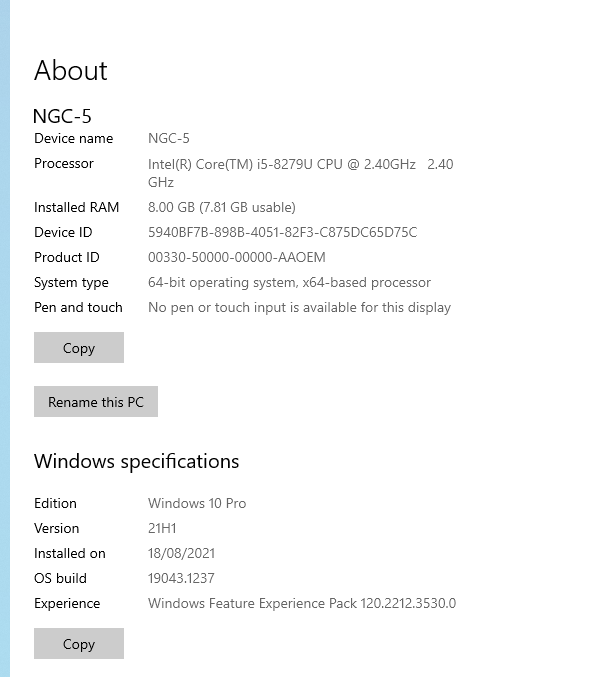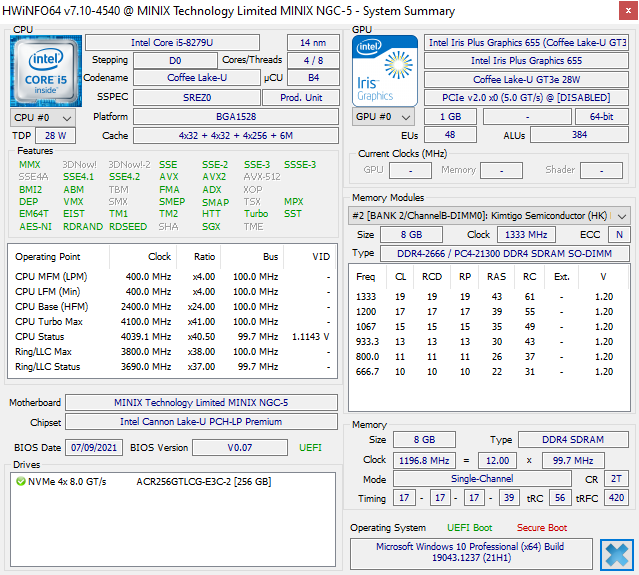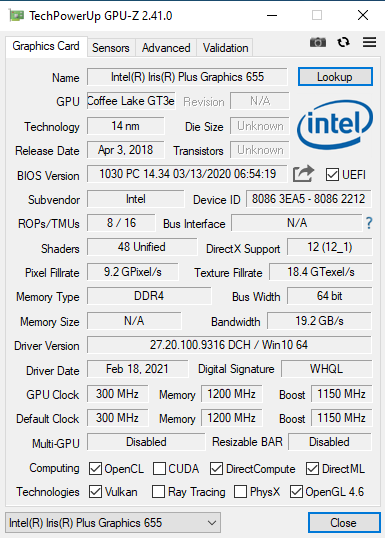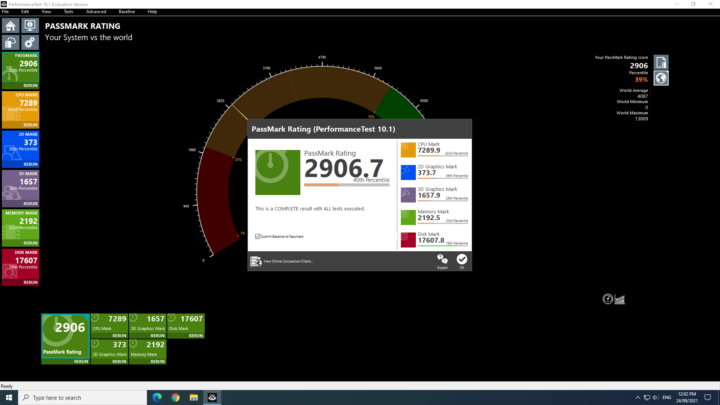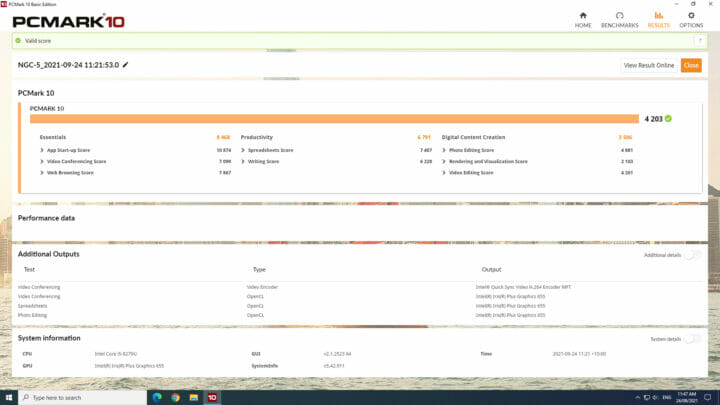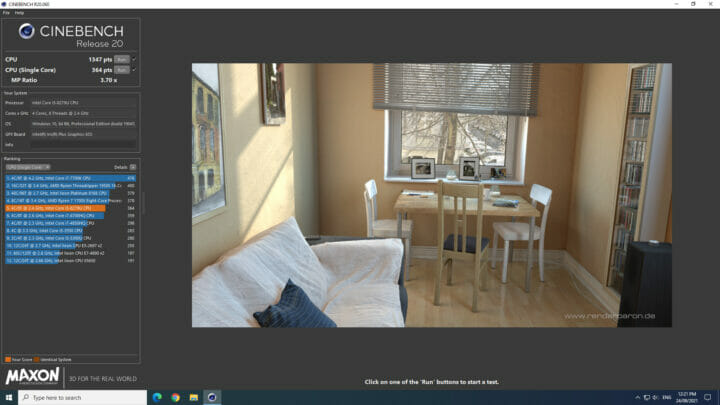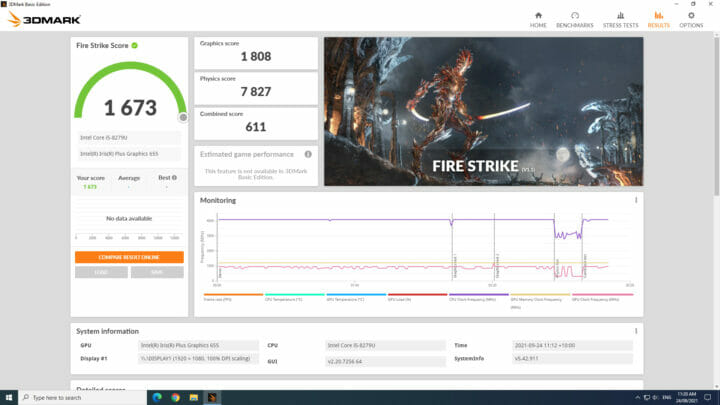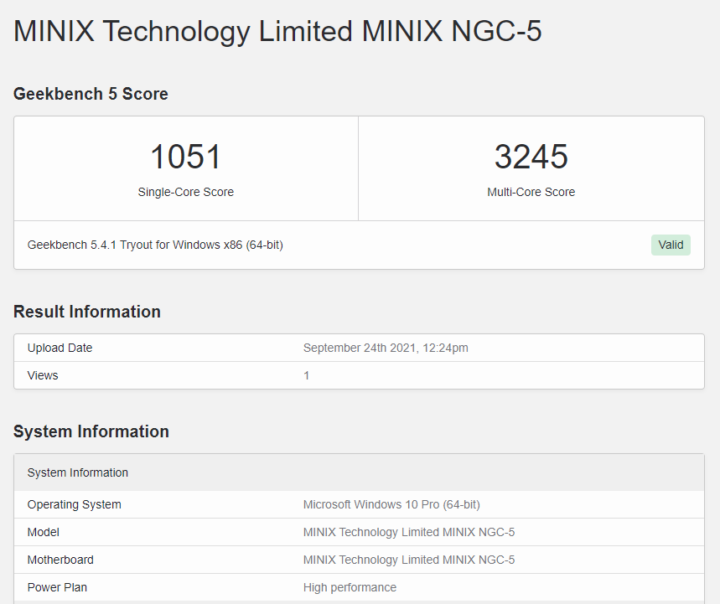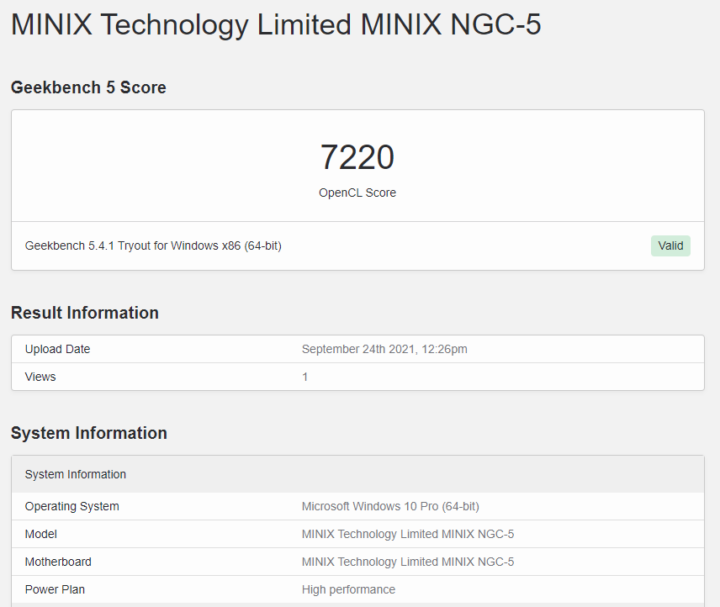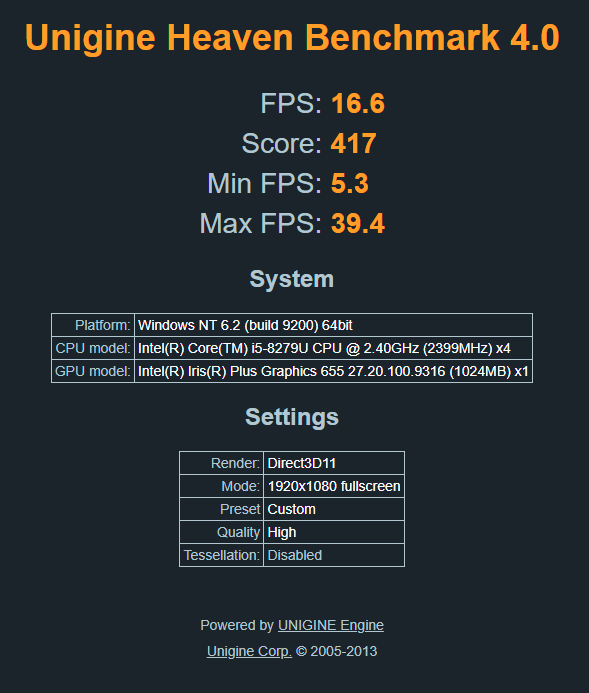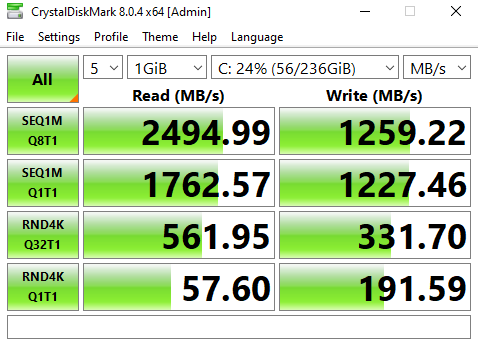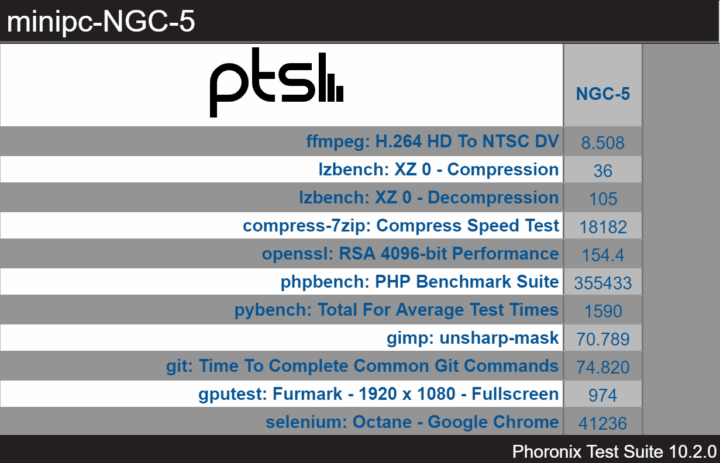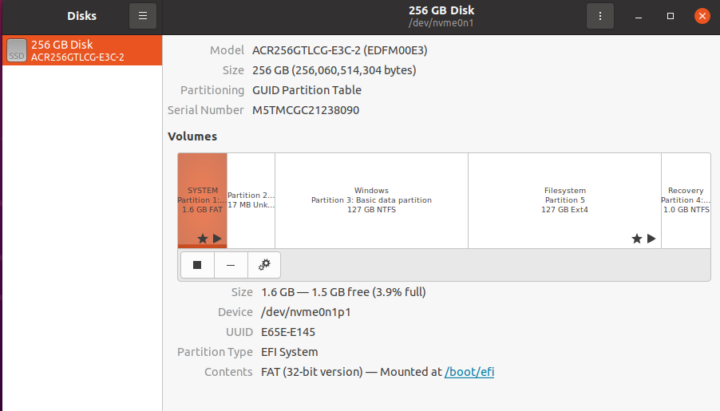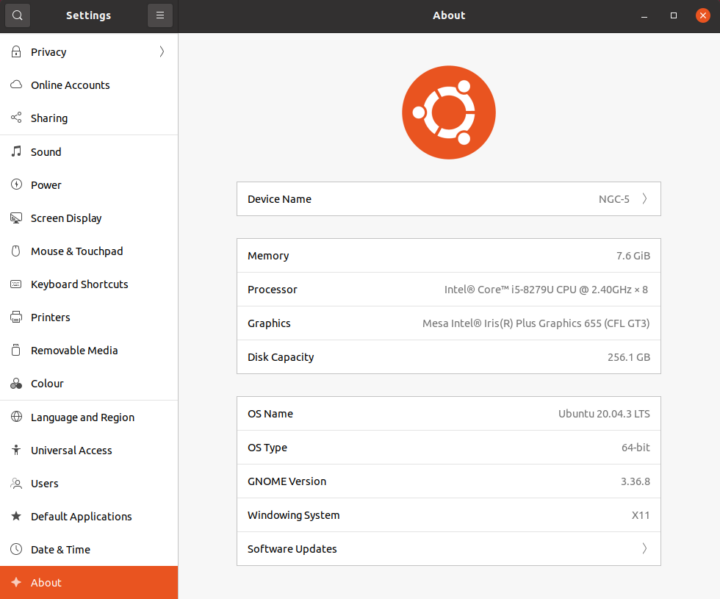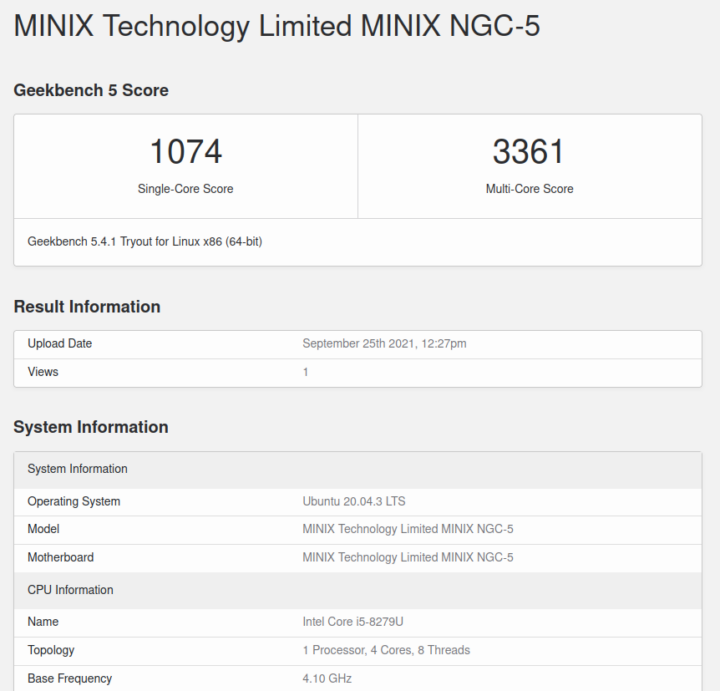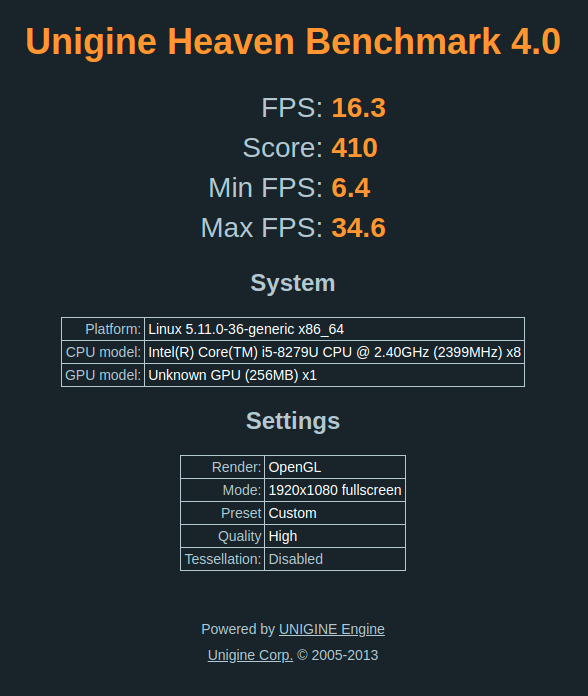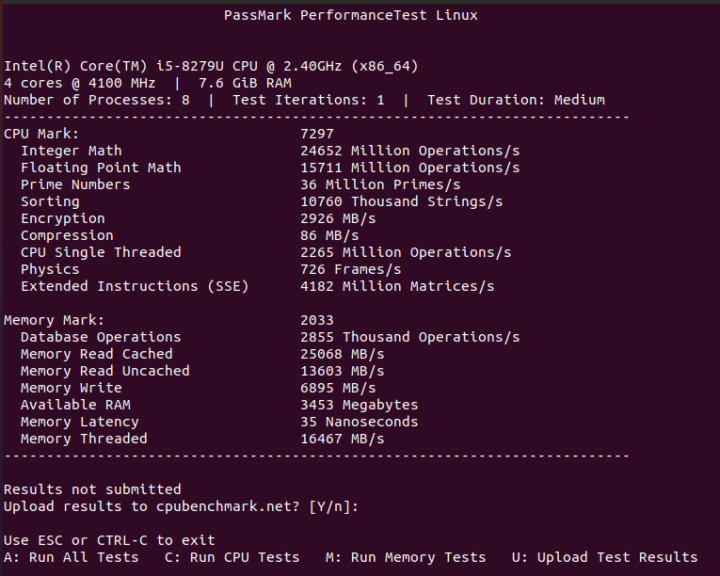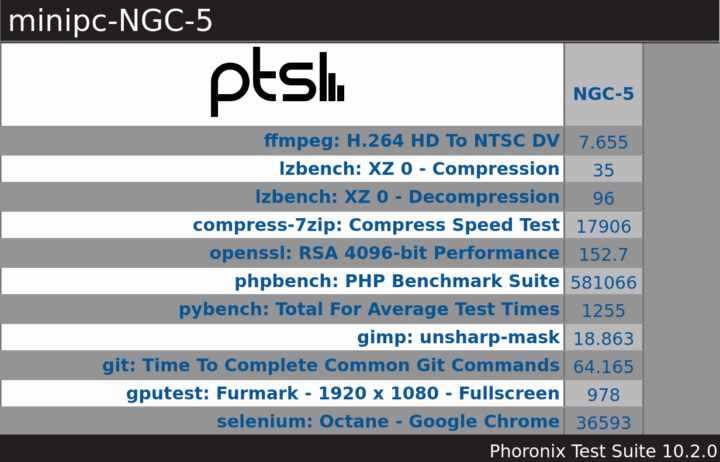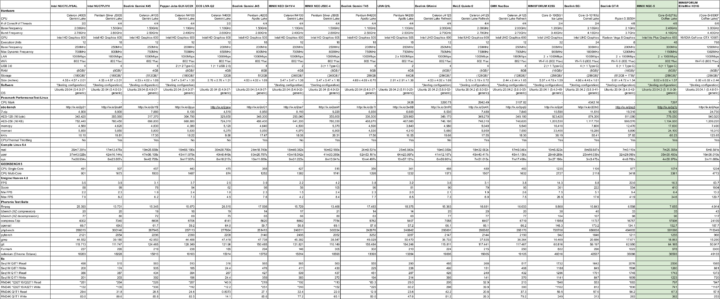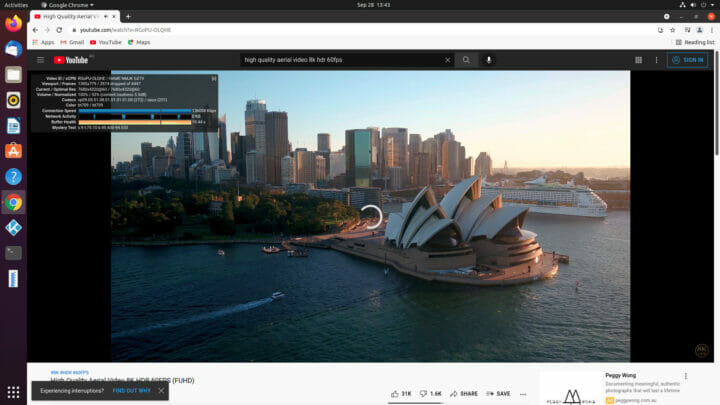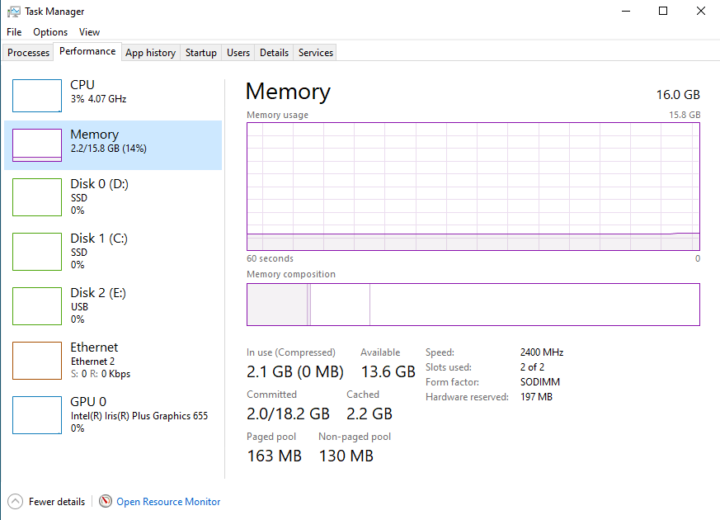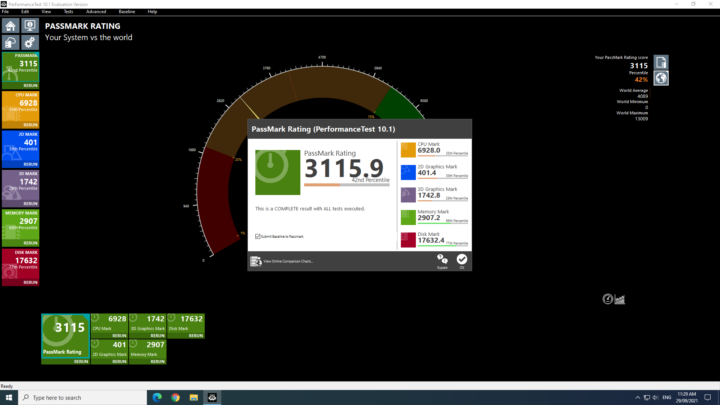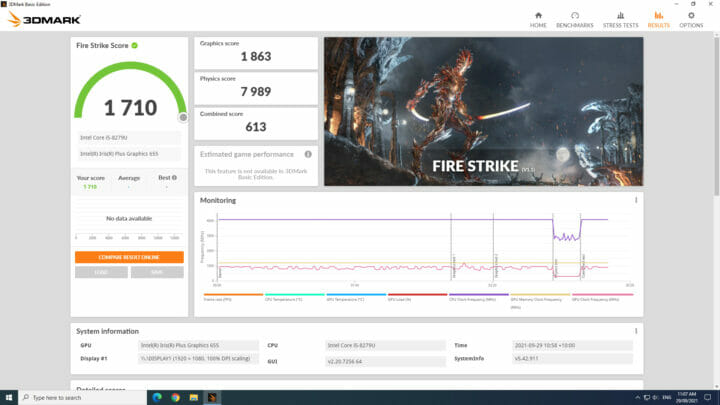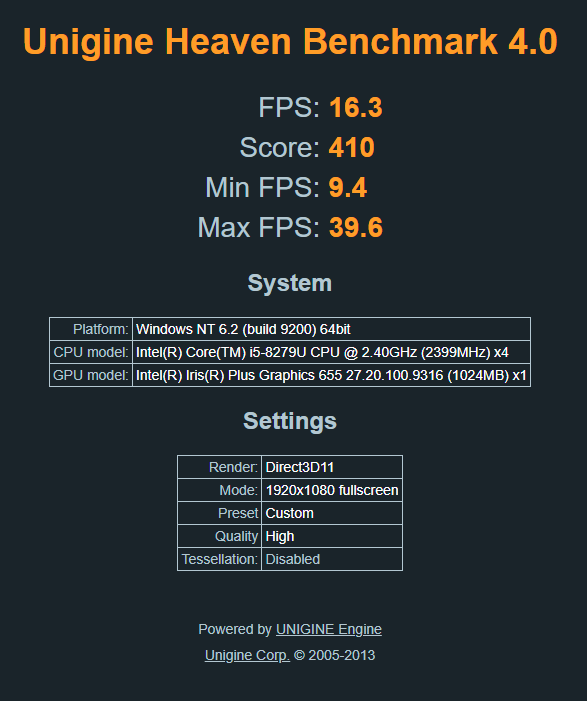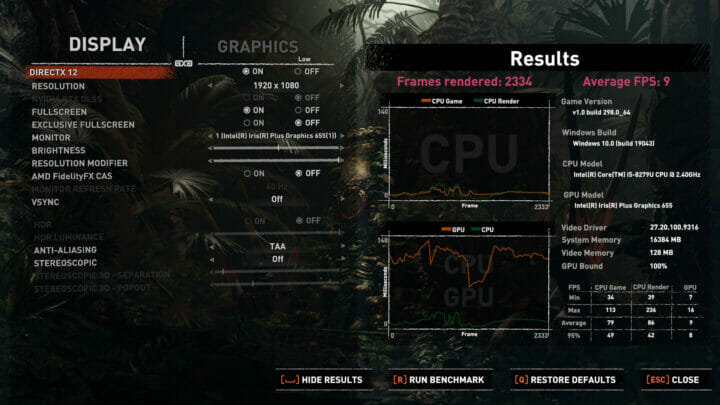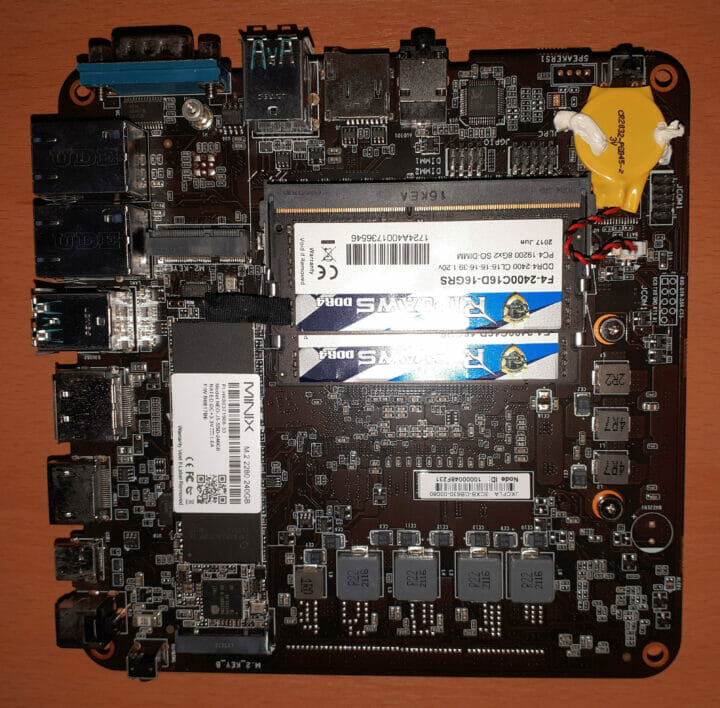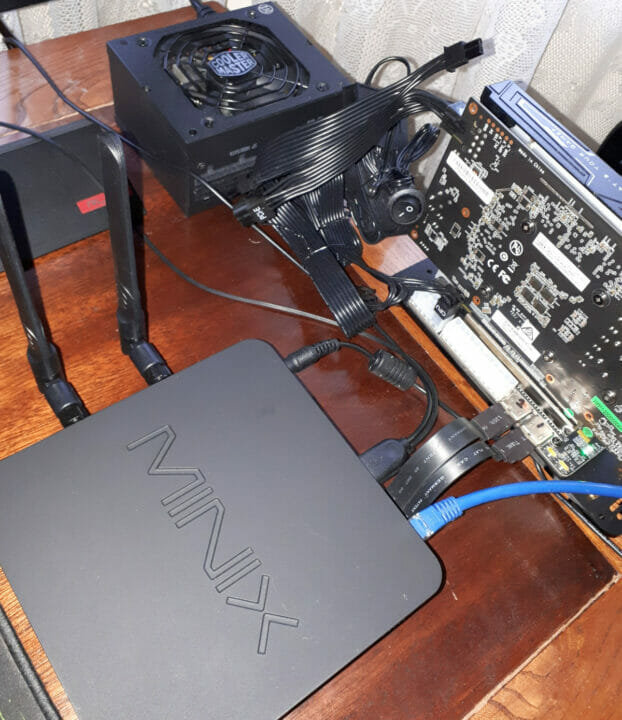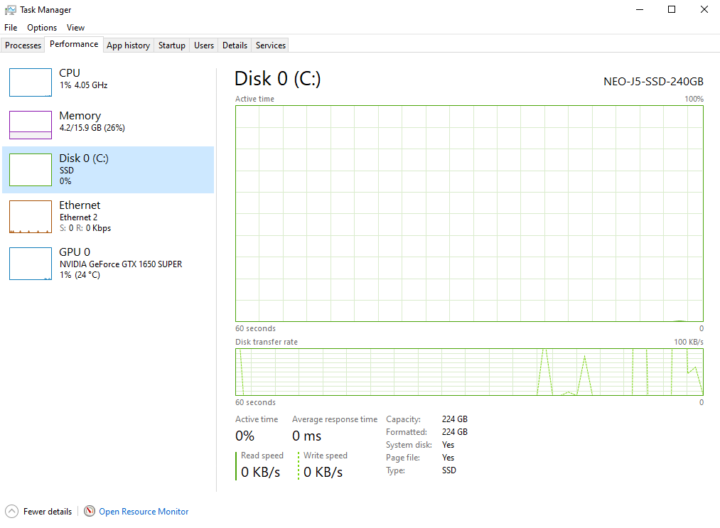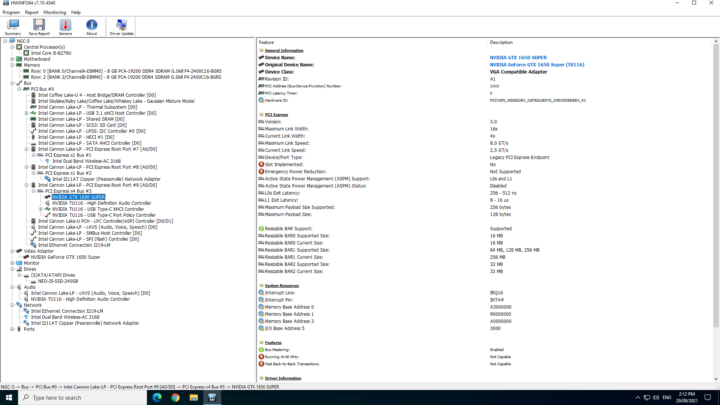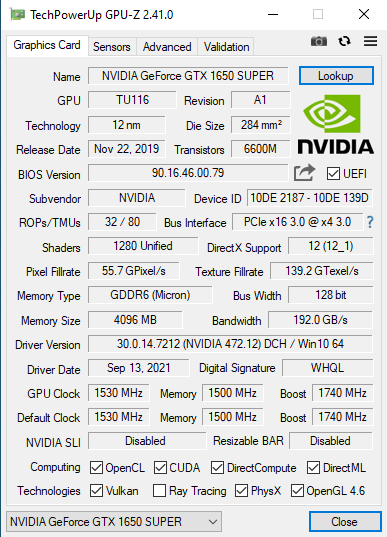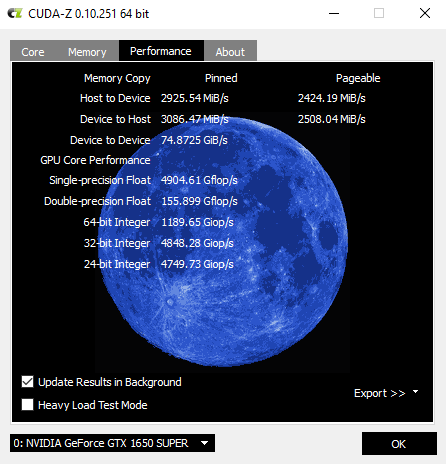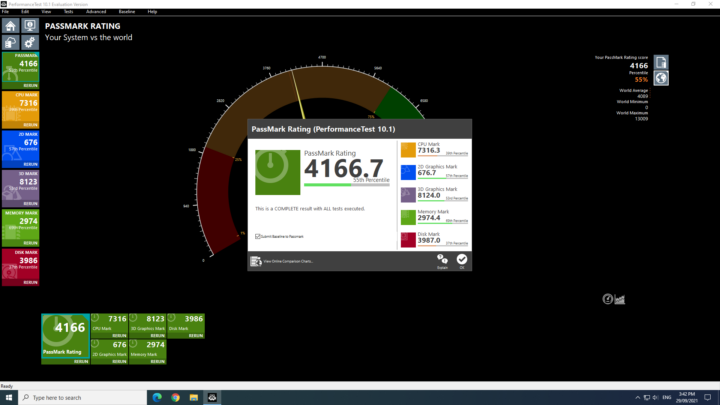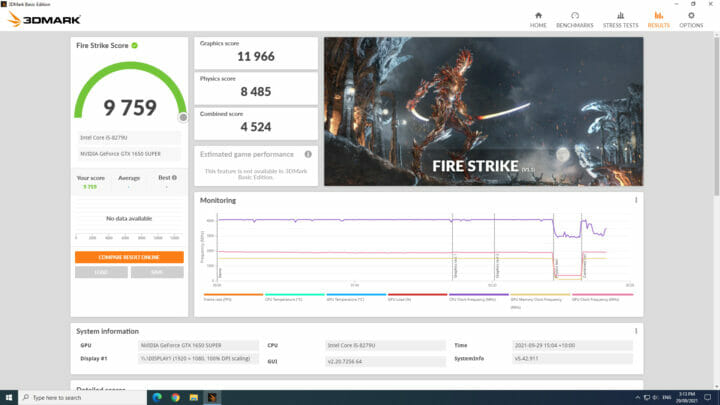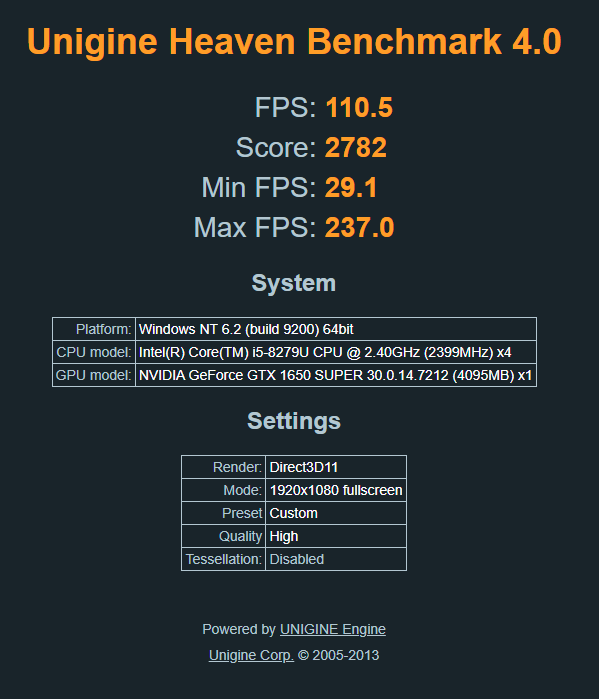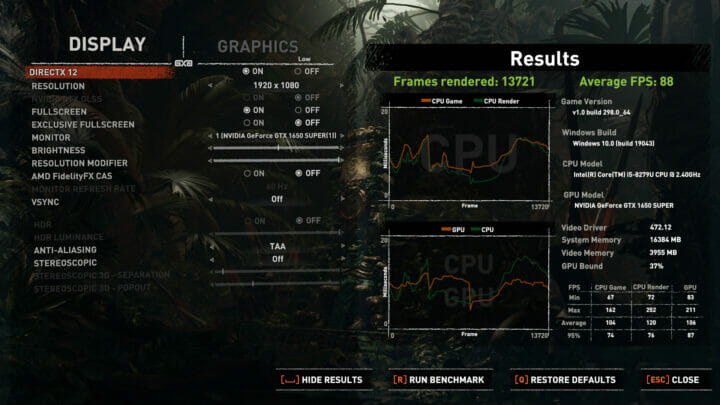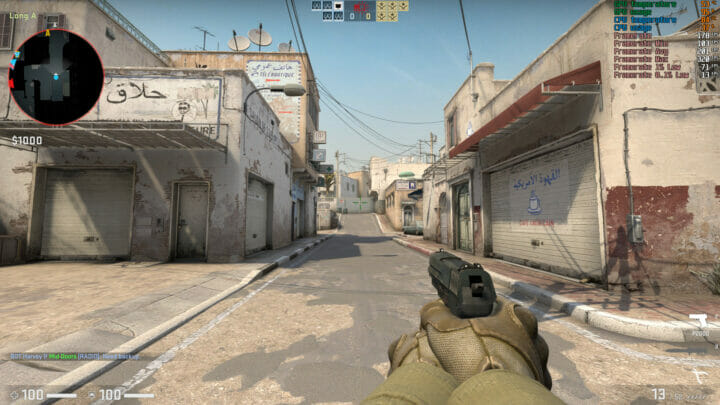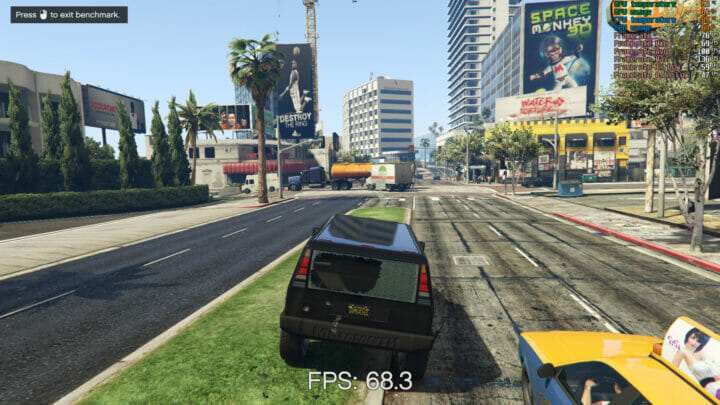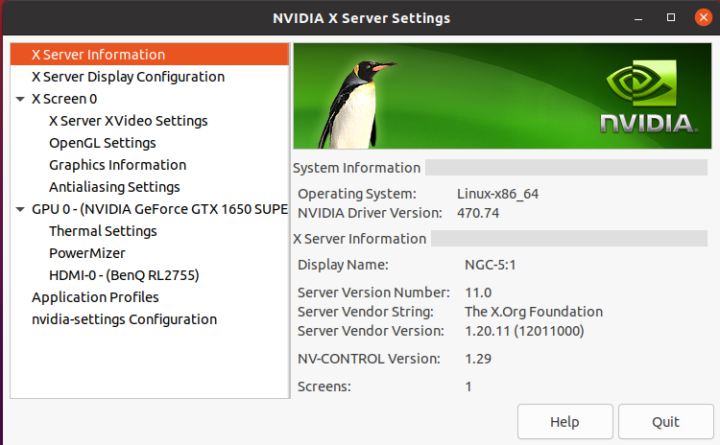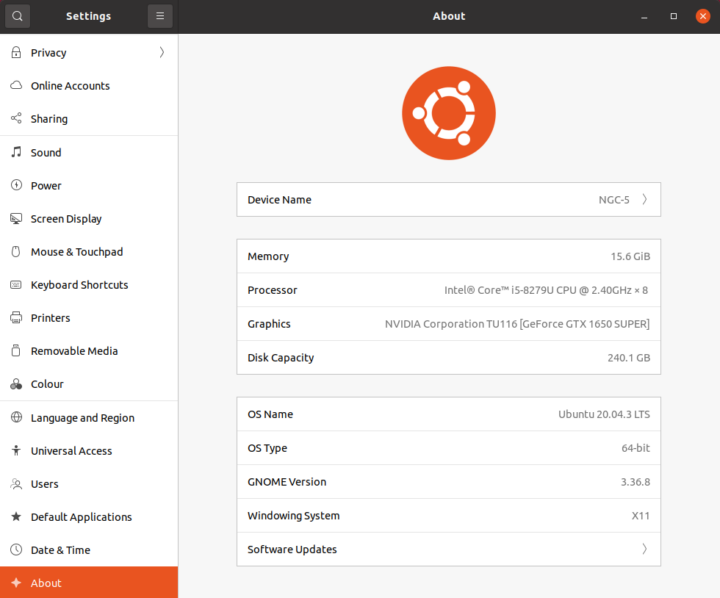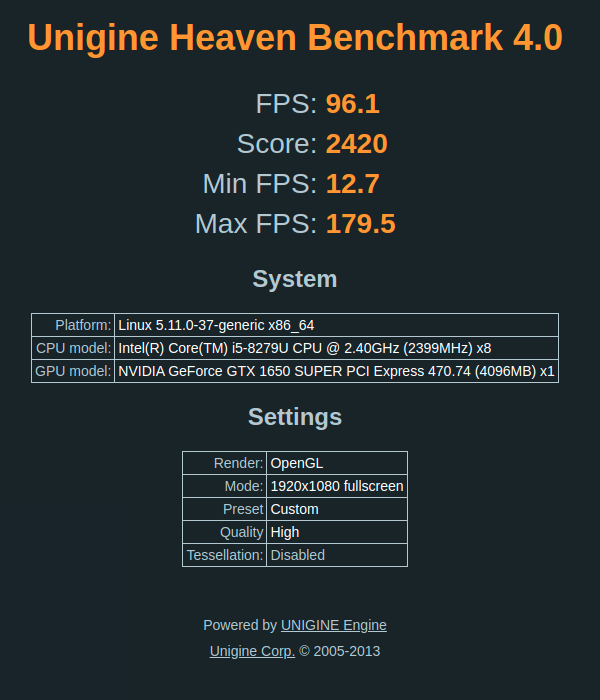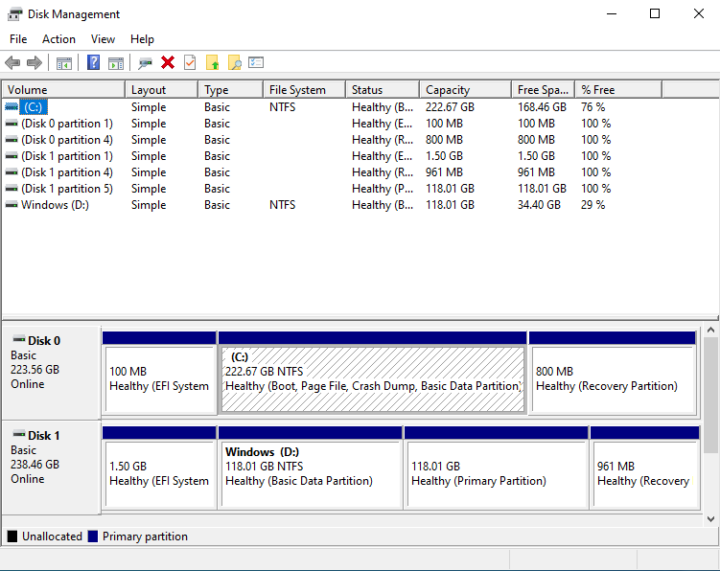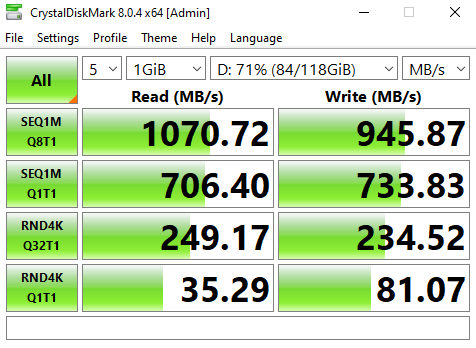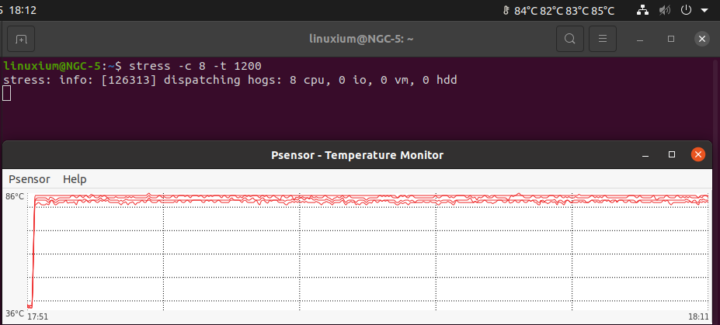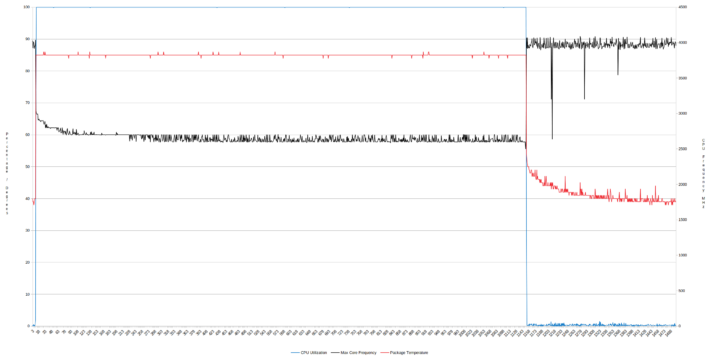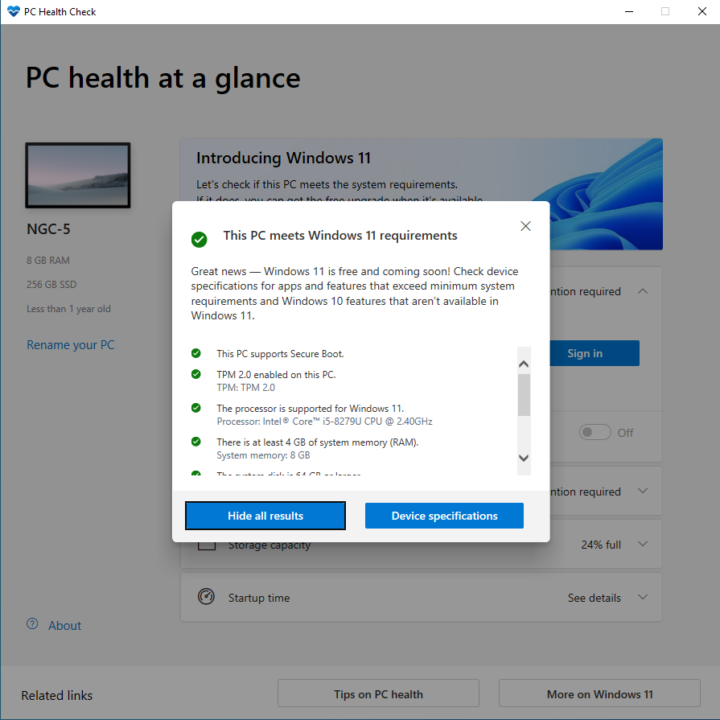MINIX has just launched a new mini PC in their NGC range called the NGC-5. Although it uses a somewhat dated Intel eighth-generation Core i5 processor, the integrated Iris Plus Graphics 655 is notable for being one of the more powerful iGPU solutions. MINIX kindly sent one for review and I’ve looked at performance running both Windows and Ubuntu together with using an eGPU.
Hardware Overview
The NGC-5 physically consists of a 153 x 153 x 43mm (6.02 x 6.02 x 1.57 inches) square plastic case. As an actively cooled mini PC, it uses Intel’s older 14 nm++ Core i5-8279U Coffee Lake processor which is a quad-core 8-thread 2.40 GHz processor boosting to 4.10 GHz with Intel’s Iris Plus Graphics 655.
The front panel has just a LED power indicator whereas the rear panel includes dual gigabit Ethernet ports, dual USB 3.1 ports, a DisplayPort 1.2, an HDMI 2.0a port, a Type-C USB 3.1 port and the power jack. The left panel has a reset pin-hole, two wifi antennas, and a Kensington security slot. The right panel has the power button, a combined headphone and S/PDIF jack, a micro-SD card slot, two more USB 3.1 ports, and an RS232 port.
The review model included a 256GB M.2 2280 NVMe SSD drive with Windows 10 Pro installed and a single stick of 8GB DDR4 2666 MHz memory occupying one of the SO-DIMM slots:
which was configured, most likely by a non-visible BIOS option, to run at 2400 MHz as seen in both Windows:
Additionally, there is a nano SIM card slot, a replaceable M.2 2230 WiFi 5 (or 802.11ac) Intel 3168NGW card as well as a somewhat undocumented ability to add an additional M.2 2242 SATA SSD drive:
The box specifications state:
Box contents
In the box, you get a power adapter and cord with a plug appropriate for your country, an HDMI cable, two external antennas, and a VESA mounting bracket together with screws for attaching the device behind a monitor. You also get a little plastic bag containing an S/PDIF 3.5mm adapter, an M.2 retaining screw, what looks like two standoffs, a couple of adhesive pieces of rubber, and a further smaller bag containing a couple of small screws for which the intended use is unclear. Also included is a European multilingual user manual:
Review Methodology
When reviewing mini PCs I typically look at their performance under both Windows and Linux (Ubuntu) and compare them against some of the more recently released mini PCs. I am now reviewing using Windows 10 version 21H1 and Ubuntu 20.04.3 LTS and test with a selection of commonly used Windows benchmarks and/or equivalents for Linux together with Thomas Kaiser’s ‘sbc-bench’ which is a small set of different CPU performance tests focusing on server performance when run on Ubuntu. I also use ‘Phoronix Test Suite’ and benchmark with the same set of tests on both Windows and Ubuntu for comparison purposes. On Ubuntu, I also compile the v5.4 Linux kernel using the default config as a test of performance using a real-world scenario.
Prior to benchmarking, I perform all necessary installations and updates to run the latest versions of both OSes. I also capture some basic details of the device for each OS.
Installation Issues
On initial boot the Windows ‘Update’ screen states that ‘some settings are managed by your organization’:
Viewing the configured update policies shows that automatic updates are disabled:
Given that Windows is a factory installation, checking Windows Insider Program confirmed that it had not been enabled:
Further investigation proved that Windows updates had been blocked through the addition of a registry key:
When performing WiFi testing it was found that the 2.4GHz network performance was very poor. Once all ‘stock’ testing was completed and the device opened to add more memory the reason why was discovered to be a damaged WiFi U.FL pigtail connector:
This was caused during the manufacturer’s assembly of the device and special care is advised when accessing the memory as it requires removing the motherboard entirely from the plastic case and obviously the WiFi cables very easily get trapped when reseating the motherboard back into the case.
Windows Performance on MINIX NGC-5
Initially, the NGC-5 comes installed with a licensed copy of Windows 10 Pro version 21H1 build 19043.985. After upgrading to build 19043.1237 a quick look at the hardware information shows it is aligned to the specification:
A brief check showed working audio, micro-SD, Wi-Fi, Bluetooth, and Ethernet.
I then set the power mode to ‘High performance’ and ran my standard set of benchmarking tools to look at performance under Windows:
For my specific set of Phoronix Test Suite tests the results were:
All these results can then be compared with other recent mini PCs:
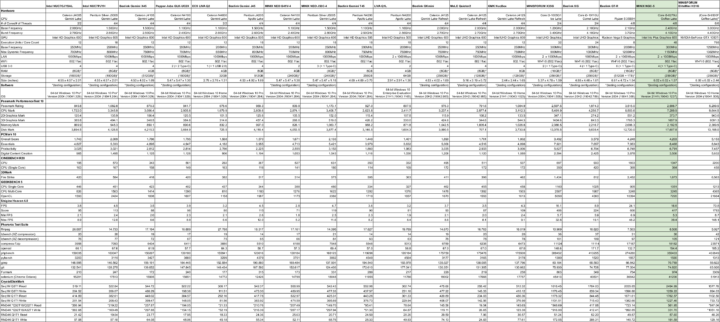
The results are actually slightly lower than when compared with other mini PCs using the same or similar Core i5 CPU. This is due to CPU throttling and is discussed further in the ‘Thermals’ section below.
Ubuntu Performance
After shrinking the Windows partition in half and creating a new partition I installed Ubuntu using an Ubuntu 20.04.3 ISO as dual boot. After installation and updates, a brief check showed working audio, micro-SD, Wi-Fi, Bluetooth, and Ethernet.
The key hardware information under Ubuntu 20.04.3 is as follows:
|
1 2 3 4 5 6 7 8 9 10 11 12 13 14 15 16 17 18 19 20 21 22 23 24 25 26 27 28 29 30 31 32 33 34 35 36 37 38 39 40 41 42 43 44 45 46 47 48 49 50 51 52 53 54 55 56 57 58 59 60 61 62 63 64 65 66 67 68 69 70 71 72 73 74 75 76 77 78 79 80 81 82 83 84 85 86 87 88 89 90 91 92 93 94 95 96 97 98 99 100 101 102 103 104 105 106 107 108 109 110 111 112 113 114 115 116 117 118 119 120 121 122 123 124 125 126 127 128 129 130 131 132 133 134 135 136 137 138 139 140 141 142 143 144 145 146 147 148 149 150 151 152 153 154 155 156 157 158 159 160 161 162 163 164 165 166 167 168 169 170 171 172 173 174 175 176 177 178 179 180 181 182 183 184 185 186 187 188 189 190 191 192 193 194 195 196 197 198 199 200 201 202 203 204 205 206 207 208 209 210 211 212 213 214 215 216 217 218 219 220 221 222 223 224 225 226 227 228 229 230 231 232 233 234 235 236 237 238 239 240 241 242 243 244 245 246 247 248 |
linuxium@NGC-5:~$ lsb_release -a Distributor ID: Ubuntu Description: Ubuntu 20.04.3 LTS Release: 20.04 Codename: focal linuxium@NGC-5:~$ linuxium@NGC-5:~$ uname -a Linux NGC-5 5.11.0-36-generic #40~20.04.1-Ubuntu SMP Sat Sep 18 02:14:19 UTC 2021 x86_64 x86_64 x86_64 GNU/Linux linuxium@NGC-5:~$ linuxium@NGC-5:~$ inxi -Fc0 System: Host: NGC-5 Kernel: 5.11.0-36-generic x86_64 bits: 64 Desktop: Gnome 3.36.9 Distro: Ubuntu 20.04.3 LTS (Focal Fossa) Machine: Type: Desktop Mobo: MINIX Limited model: MINIX NGC-5 serial: N/A UEFI: American Megatrends v: 0.07 date: 07/09/2021 CPU: Topology: Quad Core model: Intel Core i5-8279U bits: 64 type: MT MCP L2 cache: 6144 KiB Speed: 4101 MHz min/max: 400/4100 MHz Core speeds (MHz): 1: 4042 2: 4095 3: 4102 4: 4051 5: 4099 6: 3922 7: 4081 8: 3831 Graphics: Device-1: Intel Iris Plus Graphics 655 driver: i915 v: kernel Display: server: X.Org 1.20.11 driver: i915 resolution: 1920x1080~60Hz OpenGL: renderer: Mesa Intel Iris Plus Graphics 655 (CFL GT3) v: 4.6 Mesa 21.0.3 Audio: Device-1: Intel Cannon Point-LP High Definition Audio driver: snd_hda_intel Sound Server: ALSA v: k5.11.0-36-generic Network: Device-1: Intel Ethernet I219-LM driver: e1000e IF: eno1 state: down mac: xx:xx:xx:xx:xx:xx Device-2: Intel Dual Band Wireless-AC 3168NGW [Stone Peak] driver: iwlwifi IF: wlp1s0 state: down mac: xx:xx:xx:xx:xx:xx Device-3: Intel I211 Gigabit Network driver: igb IF: enp2s0 state: up speed: 1000 Mbps duplex: full mac: xx:xx:xx:xx:xx:xx Drives: Local Storage: total: 238.47 GiB used: 19.38 GiB (8.1%) ID-1: /dev/nvme0n1 model: ACR256GTLCG-E3C-2 size: 238.47 GiB Partition: ID-1: / size: 115.66 GiB used: 19.32 GiB (16.7%) fs: ext4 dev: /dev/nvme0n1p5 Sensors: System Temperatures: cpu: 35.0 C mobo: N/A Fan Speeds (RPM): N/A Info: Processes: 242 Uptime: 32m Memory: 7.58 GiB used: 907.3 MiB (11.7%) Shell: new-review-test inxi: 3.0.38 linuxium@NGC-5:~$ linuxium@NGC-5:~$ df -h Filesystem Size Used Avail Use% Mounted on udev 3.8G 0 3.8G 0% /dev tmpfs 776M 1.8M 774M 1% /run /dev/nvme0n1p5 116G 20G 91G 18% / tmpfs 3.8G 0 3.8G 0% /dev/shm tmpfs 5.0M 4.0K 5.0M 1% /run/lock tmpfs 3.8G 0 3.8G 0% /sys/fs/cgroup /dev/loop1 56M 56M 0 100% /snap/core18/2128 /dev/loop0 219M 219M 0 100% /snap/gnome-3-34-1804/72 /dev/loop4 51M 51M 0 100% /snap/snap-store/547 /dev/loop3 66M 66M 0 100% /snap/gtk-common-themes/1515 /dev/loop2 33M 33M 0 100% /snap/snapd/12704 /dev/nvme0n1p1 1.5G 56M 1.5G 4% /boot/efi tmpfs 776M 28K 776M 1% /run/user/1000 /dev/loop5 33M 33M 0 100% /snap/snapd/13170 /dev/loop6 128K 128K 0 100% /snap/bare/5 /dev/loop7 66M 66M 0 100% /snap/gtk-common-themes/1519 linuxium@NGC-5:~$ linuxium@NGC-5:~$ lsblk -a NAME MAJ:MIN RM SIZE RO TYPE MOUNTPOINT loop0 7:0 0 219M 1 loop /snap/gnome-3-34-1804/72 loop1 7:1 0 55.4M 1 loop /snap/core18/2128 loop2 7:2 0 32.3M 1 loop /snap/snapd/12704 loop3 7:3 0 65.1M 1 loop /snap/gtk-common-themes/1515 loop4 7:4 0 51M 1 loop /snap/snap-store/547 loop5 7:5 0 32.3M 1 loop /snap/snapd/13170 loop6 7:6 0 4K 1 loop /snap/bare/5 loop7 7:7 0 65.2M 1 loop /snap/gtk-common-themes/1519 nvme0n1 259:0 0 238.5G 0 disk ├─nvme0n1p1 259:1 0 1.5G 0 part /boot/efi ├─nvme0n1p2 259:2 0 16M 0 part ├─nvme0n1p3 259:3 0 118G 0 part ├─nvme0n1p4 259:4 0 961M 0 part └─nvme0n1p5 259:5 0 118G 0 part / linuxium@NGC-5:~$ linuxium@NGC-5:~$ sudo lshw -C cpu *-cpu description: CPU product: Intel(R) Core(TM) i5-8279U CPU @ 2.40GHz vendor: Intel Corp. physical id: 46 bus info: cpu@0 version: Intel(R) Core(TM) i5-8279U CPU @ 2.40GHz serial: To Be Filled By O.E.M. slot: U3E1 size: 4009MHz capacity: 4100MHz width: 64 bits clock: 100MHz capabilities: lm fpu fpu_exception wp vme de pse tsc msr pae mce cx8 apic sep mtrr pge mca cmov pat pse36 clflush dts acpi mmx fxsr sse sse2 ss ht tm pbe syscall nx pdpe1gb rdtscp x86-64 constant_tsc art arch_perfmon pebs bts rep_good nopl xtopology nonstop_tsc cpuid aperfmperf pni pclmulqdq dtes64 monitor ds_cpl vmx est tm2 ssse3 sdbg fma cx16 xtpr pdcm pcid sse4_1 sse4_2 x2apic movbe popcnt tsc_deadline_timer aes xsave avx f16c rdrand lahf_lm abm 3dnowprefetch cpuid_fault epb invpcid_single pti ssbd ibrs ibpb stibp tpr_shadow vnmi flexpriority ept vpid ept_ad fsgsbase tsc_adjust bmi1 avx2 smep bmi2 erms invpcid mpx rdseed adx smap clflushopt intel_pt xsaveopt xsavec xgetbv1 xsaves dtherm ida arat pln pts hwp hwp_notify hwp_act_window hwp_epp md_clear flush_l1d cpufreq configuration: cores=4 enabledcores=4 threads=8 linuxium@NGC-5:~$ linuxium@NGC-5:~$ sudo lshw -C memory *-firmware description: BIOS vendor: American Megatrends Inc. physical id: 0 version: V0.07 date: 07/09/2021 size: 64KiB capacity: 16MiB capabilities: pci upgrade shadowing cdboot bootselect socketedrom edd int13floppy1200 int13floppy720 int13floppy2880 int5printscreen int14serial int17printer acpi usb biosbootspecification uefi *-memory description: System Memory physical id: 3a slot: System board or motherboard size: 8GiB *-bank:0 description: Project-Id-Version: lshwReport-Msgid-Bugs-To: FULL NAME <EMAIL@ADDRESS>PO-Revision-Date: 2012-02-02 13:04+0000Last-Translator: Joel Addison <jaddi27@gmail.com>Language-Team: English (Australia) <en_AU@li.org>MIME-Version: 1.0Content-Type: text/plain; charset=UTF-8Content-Transfer-Encoding: 8bitX-Launchpad-Export-Date: 2021-08-02 16:47+0000X-Generator: Launchpad (build 8bd362bf86c4b35e805f897f03c203e3576a7006)Project-Id-Version: lshwReport-Msgid-Bugs-To: FULL NAME <EMAIL@ADDRESS>PO-Revision-Date: 2012-02-02 13:04+0000Last-Translator: Joel Addison <jaddi27@gmail.com>Language-Team: English (Australia) <en_AU@li.org>MIME-Version: 1.0Content-Type: text/plain; charset=UTF-8Content-Transfer-Encoding: 8bitX-Launchpad-Export-Date: 2021-08-02 16:47+0000X-Generator: Launchpad (build 8bd362bf86c4b35e805f897f03c203e3576a7006) [empty] physical id: 0 slot: ChannelA-DIMM0 *-bank:1 description: SODIMM DDR4 Synchronous 2667 MHz (0.4 ns) product: KT8GS4NE8 vendor: Numonyx (Intel) physical id: 1 serial: XXXXXXXX slot: ChannelB-DIMM0 size: 8GiB width: 64 bits clock: 2667MHz (0.4ns) *-cache:0 description: L1 cache physical id: 43 slot: L1 Cache size: 256KiB capacity: 256KiB capabilities: synchronous internal write-back unified configuration: level=1 *-cache:1 description: L2 cache physical id: 44 slot: L2 Cache size: 1MiB capacity: 1MiB capabilities: synchronous internal write-back unified configuration: level=2 *-cache:2 description: L3 cache physical id: 45 slot: L3 Cache size: 6MiB capacity: 6MiB capabilities: synchronous internal write-back unified configuration: level=3 *-memory UNCLAIMED description: RAM memory product: Cannon Point-LP Shared SRAM vendor: Intel Corporation physical id: 14.2 bus info: pci@0000:00:14.2 version: 30 width: 64 bits clock: 33MHz (30.3ns) capabilities: pm cap_list configuration: latency=0 resources: memory:a1434000-a1435fff memory:a143a000-a143afff linuxium@NGC-5:~$ linuxium@NGC-5:~$ free -mh total used free shared buff/cache available Mem: 7.6Gi 806Mi 5.0Gi 176Mi 1.7Gi 6.4Gi Swap: 2.0Gi 0B 2.0Gi linuxium@NGC-5:~$ linuxium@NGC-5:~$ sudo lshw -C network *-network description: Wireless interface product: Dual Band Wireless-AC 3168NGW [Stone Peak] vendor: Intel Corporation physical id: 0 bus info: pci@0000:01:00.0 logical name: wlp1s0 version: 10 serial: xx:xx:xx:xx:xx:xx width: 64 bits clock: 33MHz capabilities: pm msi pciexpress bus_master cap_list ethernet physical wireless configuration: broadcast=yes driver=iwlwifi driverversion=5.11.0-36-generic firmware=29.1654887522.0 3168-29.ucode latency=0 link=no multicast=yes wireless=IEEE 802.11 resources: irq:143 memory:a1300000-a1301fff *-network description: Ethernet interface product: I211 Gigabit Network Connection vendor: Intel Corporation physical id: 0 bus info: pci@0000:02:00.0 logical name: enp2s0 version: 03 serial: xx:xx:xx:xx:xx:xx size: 1Gbit/s capacity: 1Gbit/s width: 32 bits clock: 33MHz capabilities: pm msi msix pciexpress bus_master cap_list ethernet physical tp 10bt 10bt-fd 100bt 100bt-fd 1000bt-fd autonegotiation configuration: autonegotiation=on broadcast=yes driver=igb driverversion=5.11.0-36-generic duplex=full firmware=0. 6-1 ip=xxx.xxx.xxx.xxx latency=0 link=yes multicast=yes port=twisted pair speed=1Gbit/s resources: irq:19 memory:a1200000-a121ffff ioport:3000(size=32) memory:a1220000-a1223fff *-network description: Ethernet interface product: Ethernet Connection I219-LM vendor: Intel Corporation physical id: 1f.6 bus info: pci@0000:00:1f.6 logical name: eno1 version: 30 serial: xx:xx:xx:xx:xx:xx capacity: 1Gbit/s width: 32 bits clock: 33MHz capabilities: pm msi bus_master cap_list ethernet physical tp 10bt 10bt-fd 100bt 100bt-fd 1000bt-fd autonegotiation configuration: autonegotiation=on broadcast=yes driver=e1000e driverversion=5.11.0-36-generic firmware=0.13-4 latency=0 link=no multicast=yes port=twisted pair resources: irq:126 memory:a1400000-a141ffff linuxium@NGC-5:~$ linuxium@NGC-5:~$ sudo lshw -C display *-display description: VGA compatible controller product: Iris Plus Graphics 655 vendor: Intel Corporation physical id: 2 bus info: pci@0000:00:02.0 version: 01 width: 64 bits clock: 33MHz capabilities: pciexpress msi pm vga_controller bus_master cap_list rom configuration: driver=i915 latency=0 resources: irq:144 memory:a0000000-a0ffffff memory:90000000-9fffffff ioport:4000(size=64) memory:c0000-dffff linuxium@NGC-5:~$ linuxium@NGC-5:~$ lsusb Bus 002 Device 001: ID 1d6b:0003 Linux Foundation 3.0 root hub Bus 001 Device 003: ID 046d:c31c Logitech, Inc. Keyboard K120 Bus 001 Device 004: ID 8087:0aa7 Intel Corp. Bus 001 Device 002: ID 093a:2510 Pixart Imaging, Inc. Optical Mouse Bus 001 Device 001: ID 1d6b:0002 Linux Foundation 2.0 root hub linuxium@NGC-5:~$ linuxium@NGC-5:~$ lspci -nn 00:00.0 Host bridge [0600]: Intel Corporation 8th Gen Core Processor Host Bridge/DRAM Registers [8086:3ed0] (rev 08) 00:02.0 VGA compatible controller [0300]: Intel Corporation Iris Plus Graphics 655 [8086:3ea5] (rev 01) 00:08.0 System peripheral [0880]: Intel Corporation Xeon E3-1200 v5/v6 / E3-1500 v5 / 6th/7th/8th Gen Core Processor Gaussian Mixture Model [8086:1911] 00:12.0 Signal processing controller [1180]: Intel Corporation Cannon Point-LP Thermal Controller [8086:9df9] (rev 30) 00:14.0 USB controller [0c03]: Intel Corporation Cannon Point-LP USB 3.1 xHCI Controller [8086:9ded] (rev 30) 00:14.2 RAM memory [0500]: Intel Corporation Cannon Point-LP Shared SRAM [8086:9def] (rev 30) 00:14.5 SD Host controller [0805]: Intel Corporation BayHubTech Integrated SD controller [8086:9df5] (rev 30) 00:15.0 Serial bus controller [0c80]: Intel Corporation Cannon Point-LP Serial IO I2C Controller #0 [8086:9de8] (rev 30) 00:16.0 Communication controller [0780]: Intel Corporation Cannon Point-LP MEI Controller #1 [8086:9de0] (rev 30) 00:1c.0 PCI bridge [0604]: Intel Corporation Cannon Point-LP PCI Express Root Port #7 [8086:9dbe] (rev f0) 00:1c.7 PCI bridge [0604]: Intel Corporation Cannon Point PCI Express Root Port #8 [8086:9dbf] (rev f0) 00:1d.0 PCI bridge [0604]: Intel Corporation Cannon Point-LP PCI Express Root Port #9 [8086:9db0] (rev f0) 00:1f.0 ISA bridge [0601]: Intel Corporation Cannon Point-LP LPC Controller [8086:9d84] (rev 30) 00:1f.3 Audio device [0403]: Intel Corporation Cannon Point-LP High Definition Audio Controller [8086:9dc8] (rev 30) 00:1f.4 SMBus [0c05]: Intel Corporation Cannon Point-LP SMBus Controller [8086:9da3] (rev 30) 00:1f.5 Serial bus controller [0c80]: Intel Corporation Cannon Point-LP SPI Controller [8086:9da4] (rev 30) 00:1f.6 Ethernet controller [0200]: Intel Corporation Ethernet Connection I219-LM [8086:156f] (rev 30) 01:00.0 Network controller [0280]: Intel Corporation Dual Band Wireless-AC 3168NGW [Stone Peak] [8086:24fb] (rev 10) 02:00.0 Ethernet controller [0200]: Intel Corporation I211 Gigabit Network Connection [8086:1539] (rev 03) 03:00.0 Non-Volatile memory controller [0108]: Phison Electronics Corporation Device [1987:5013] (rev 01) linuxium@NGC-5:~$ |
I then set the CPU Scaling Governor to ‘performance’ and ran my Linux benchmarks for which the majority of the results are text-based but the graphical ones included:
I also ran Passmark PerformanceTest Linux:
which can be directly compared to the results from when it was run in Windows:


For the same set of Phoronix Test Suite tests the results were:
The complete results together with a comparison against other recent mini PCs are:
and again showed that the processor is throttling to prevent overheating.
Video playing on MINIX NGC-5 with Web browsers & Kodi
For real-world testing, I played some videos in Edge, Chrome, and Kodi on Windows and in Firefox, Chrome and Kodi on Ubuntu and no issues were encountered playing up to 4K videos.
I also attempted playing an 8K video in YouTube on Edge which played fine with only the occasional dropped frame:

However, in Ubuntu whilst Chrome was arguably better than Firefox the same video continually stalled:
Dual-Channel Memory
To see the effect of dual-channel memory I swapped out the supplied 8GB stick of 2666 MHz memory for two of my own 8GB sticks of 2400 MHz:
Rerunning Passmark achieved a higher rating based on the improved memory mark and there was also a slight improvement to the graphics marks:
This was also the case when rerunning 3D Fire Strike where the graphics score also slightly increased:
However, rerunning Unigine Heaven decreased very slightly :
but this could be a simple variance within the margin of testing.
Gaming on Coffee Lake
As can be seen from the above Unigine Heaven scores gaming is possible. With the additional memory still installed I tested three games under Steam on Windows (Counter-Strike: Global Offensive, Grand Theft Auto V and Shadow Of The Tomb Raider). With default settings in both CS:GO and GTA V the average framerate was 43 and 37 respectively. For SOTTR using the graphical preset of low in the built-in benchmark the framerate was a disappointing 9:
eGPU Performance on NGC-5 mini PC
Unfortunately, the NGC-5 doesn’t include a Thunderbolt port however the underside of the case includes an access point to the M.2 2280 NVME drive:
and this immediately made me think of adding an eGPU to the mini PC by using a ‘PCIe x16 to M.2 NVMe adapter’ which would connect unobtrusively. Coupled with this was the fact that internally there is an empty M.2 2242 SATA drive and I found it was possible to install a longer 80mm drive through improvisation. By removing the tape that holds the fan cables in position and is rather conveniently not really required, I reused the tape to secure down the longer SATA drive given the M.2 standoff cannot be relocated due to the CPU cooler’s location:
To configure my eGPU I’ve reused an old MINIX NEO J5 M.2 2280 SATA drive as the boot drive and connected a GTX 1650 Super using a ‘JHH-LINK DOCK-6’ from ADT-Link (simply because this version has interchangeable PCIe cables and makes physically connecting much easier) together with an external SFX power supply and 24-pin power jumper switch:
Prior to connecting the eGPU I first cloned Windows by using ‘dism’ to create an image from the NVME drive. I then physically removed the NVME drive and ‘installed’ the SATA drive and used ‘dism’ running from a USB with Windows ISO to install the image to the SATA drive. I was then able to boot from the SATA drive:
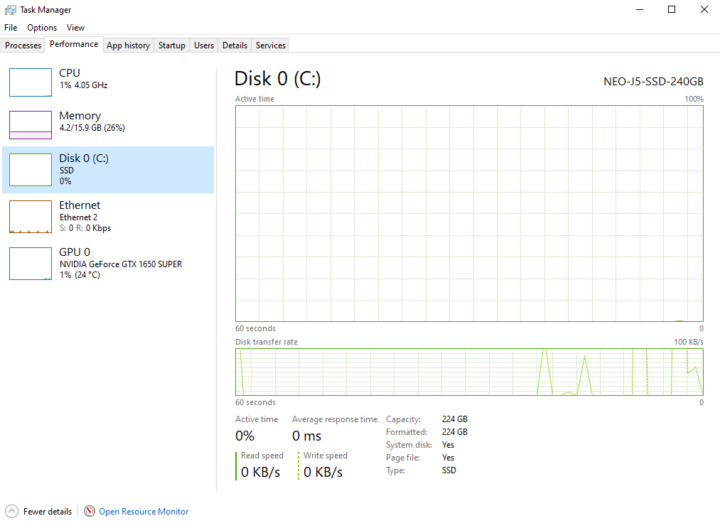
whilst still having activated Windows and everything previously installed including all the required drivers:
together with respectable drive speeds:
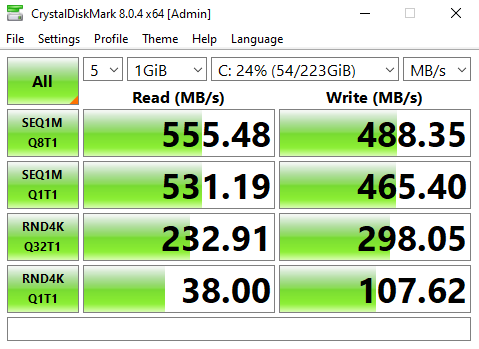 After connecting the eGPU it showed up as PCIe x4 Gen 3:
After connecting the eGPU it showed up as PCIe x4 Gen 3:
and after installing the latest NVIDIA driver:
running CUDA-Z gave an indication of the performance to expect:
I first ran a few graphical-orientated benchmarks including:
which showed encouraging performance so I then ran the built-in benchmark for Shadow Of The Tomb Raider (SOTTR) using the preset of low graphics settings and achieved 88 FPS:
Using the preset of high graphics settings resulted in an acceptable 64 FPS.
Next, I tried Counter-Strike: Global Offensive (CS:GO) with default settings and achieved around 201 FPS:
and for Grand Theft Auto V (GTA V) again with default settings got 100 FPS in the final benchmark scene:
Finally, I installed Ubuntu as dual boot on the SATA drive and downloaded and configured the latest NVIDIA Linux driver:
With Ubuntu now using the GTX 1650 Super:
as a quick test I ran the Unigine Heaven benchmark:
which of course was slightly lower than on Windows as it uses OpenGL.
USB Performance
To verify the speed of the USB ports I put the now unused NVME drive into a ‘USB to M.2 NVMe adapter’:
and achieved the expected 10Gbit/s speeds from each of the USB 3.1 (aka USB 3.2 Gen 2×1 or USB 3.1 Gen 2) ports:
proving that the NVME drive when installed in an adapter could be used as a viable alternative to the SATA boot drive.
MINIX NGC-5 Thermals
The NGC-5 uses active cooling and running a stress test on Ubuntu saw the CPU temperature rise immediately to 84°C where it remained for the duration of the test:
During the stress test, the maximum temperature I recorded on the top of the device was around 35.7°C in an ambient room temperature of 20.3°C and the fan whilst audible was not excessively loud measuring 42 dBA on my sound meter next to the device.
If the CPU frequency is monitored during the stress test it can be seen that the frequency drops immediately from 4100 MHz to 3000 MHz and then progressively drops down to 2700 MHz before tailing off even further to an average of 2630 MHz:
Such a substantial drop in CPU frequency accounts for the lower-than-expected performance results.
Networking
Network connectivity throughput was measured on Ubuntu using ‘iperf’:
with the poor performance of the 2.4 GHz WiFi being caused by the damaged wiring as detailed in ‘Installation Issues’ above.
MINIX NEO NGC-5 power consumption
Power consumption for the stock configuration was measured as follows:
- Initially plugged in – 0.7 Watts
- Powered off (shutdown) – 0.4 Watts (Windows) and 0.5 Watts (Ubuntu)
- BIOS* – 18.0 Watts
- GRUB boot menu – 17.8 Watts
- Idle – 13.4 Watts (Windows) and 11.2 Watts (Ubuntu)
- CPU stressed** – 37.3 Watts (Windows ‘cinebench’) and 35.3 Watts (Ubuntu ‘stress’)
- Video playback*** – 26.2 Watts (Windows Edge 4K60fps) and 45.7 Watts (Ubuntu Chrome 4K60fps)
*BIOS (see below)
**Indicative result measured after 60 seconds as power decreases due to CPU throttling
***The power figures fluctuate notably due to the fan so the value is the average of the median high and median low power readings.
BIOS
After powering up the NGC-5 hitting the F11 key results in a boot menu which includes access to the BIOS. The BIOS is very restricted:
Windows 11 on MINIX NGC-5
It is worth noting that although this mini PC uses an older Intel processor it is capable of running Windows 11 as confirmed by the Windows PC Health Check:
Final Observations
Whilst this mini PC includes a relatively powerful Core i5 CPU its potential isn’t fully reached because of thermal throttling. As the default configuration only includes single-channel memory it is likely that users will want to add an additional memory stick however access is not that easy and care must be taken to ensure the WiFi connectors are not damaged during disassembly/reassembly.
Business / industrial usage scenarios are addressed through the ample selection of ports, especially the inclusion of RS232 and a nano-SIM card slot. For consumers, the expandability through the inclusion of an M.2 2242 SATA port and the ease of access to the NVME drive facilitates the usage of a ‘DIY’ eGPU despite the absence of a Thunderbolt port.
| Highlights: | Limitations: |
|---|---|
| Additional ports of M.2 2242 SATA, RS232 and nano SIM card | Excessive CPU throttling |
| Access to NVME drive | Difficult to access memory slots |
I’d like to thank MINIX for providing the NGC-5 for review. It retails at around $560 and is currently on special at $499 on AliExpress.

Ian is interested in mini PCs and helps with reviews of mini PCs running Windows, Ubuntu and other Linux operating systems. You can follow him on Facebook or Twitter.
Support CNX Software! Donate via cryptocurrencies, become a Patron on Patreon, or purchase goods on Amazon or Aliexpress


